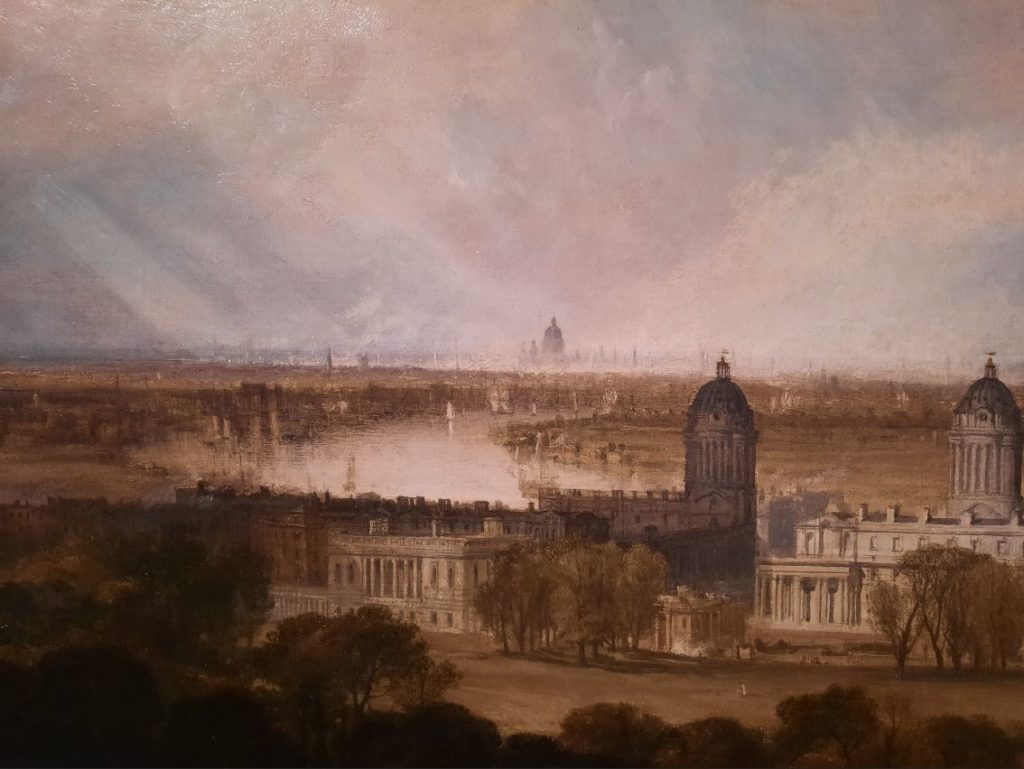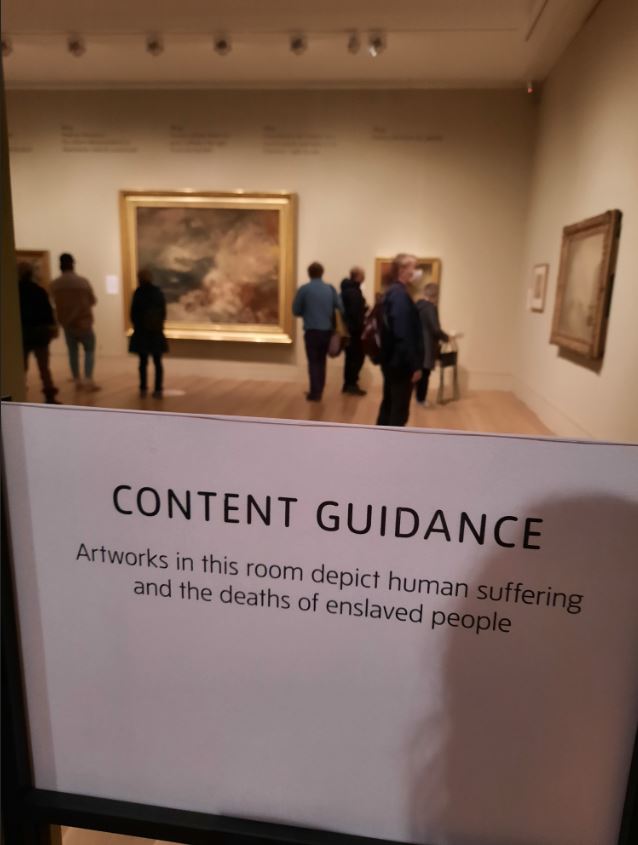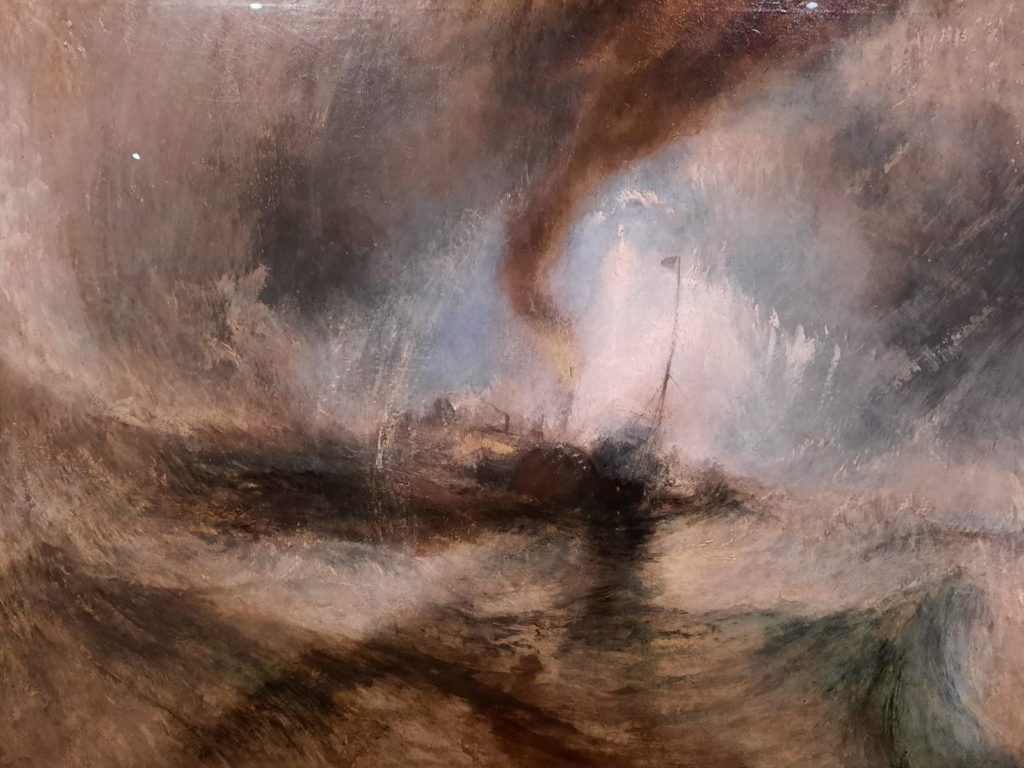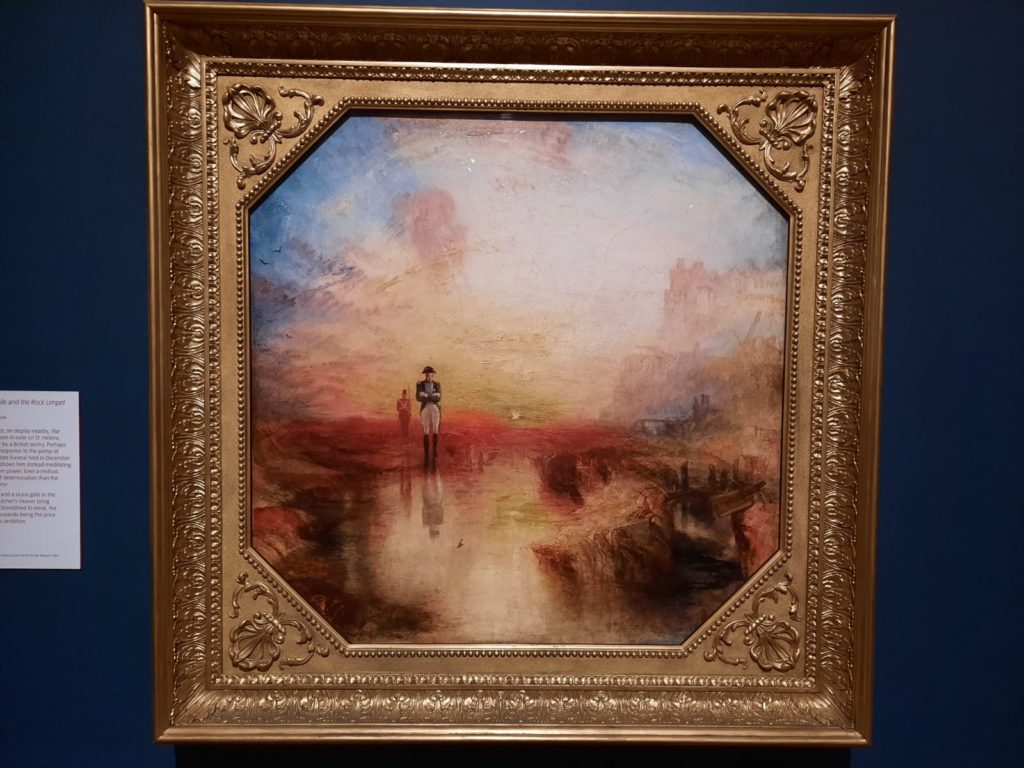Turner’s Modern World – Tate Britain, London
How can a painter be modern? Let me count the ways while visiting Turner’s Modern World for this review.
Turner and Modernity
One of the last cultural outings I squeezed in to review before Lockdown 2.0 was Turner’s Modern World. You may remember that I had been to Tate Britain a couple of months ago to see Aubrey Beardsley. Well not much has changed – I still found it ok to visit in times of Covid, but it’s up to each visitor to maintain social distancing. This inevitably has mixed results… But overall it’s fine for the vigilant, and luckily this exhibition has fewer finely detailed works requiring close examination.
A Turner exhibition (particularly one at the Tate who have huge holdings of Turner’s works thanks to a massive 19th Century bequest) is not likely to be top of my list of must-see shows, but is normally interesting nonetheless. In this case, I found the many different ways the curators had considered modernity to be innovative.
The premise is that Turner lived in a time when the world was being wrenched into modernity. The French Revolution and Napoleon had a lot to do with this, as did the Industrial Revolution. So Turner, as an artist living at this time of great change, could be modern in many different ways. He could be modern in his subject matter, modern in his attitudes, modern in his style, and so on. Just as the exhibition does, I will take each in turn below; considering what light they shed on Turner as an artist, and the world he lived in.
Turner’s Modern Subject Matter
In the first few galleries, Turner demonstrates his modernity through thoroughly modern subject matter. Britain at the time had plenty to go around: Turner painted engineering projects like the Chichester Canal. He painted industrial scenes like blast furnaces and workshops. He even (knowingly or unknowingly) painted vibrant sunsets that were the result of airborne industrial pollution. These examples are a good reminder of just how much was in flux at this time. The Industrial Revolution was certainly a wrench towards modernity rather than a gentle process. Nonetheless, the ‘dark satanic mills’ and all that went with them also inspired curious artists, Turner among them.
The next room focuses on a particular aspect of this modern subject matter. The French Revolution and Napoleonic Wars set many trends in motion which can still be seen in Europe to this day. This period saw a more modern warfare and a lot of modern boundaries drawn. In addition, a lot of what Napoleon did to support his armies and allies led to lasting modernisations. I’m thinking here of things like legal reforms and even the metric system. I’m not saying that Turner was painting the introduction of the metric system (though what a painting that would be!) but he clearly took an interest in contemporary events. Paintings of naval and land battles in the Napoleonic Wars thus occupy a large space within the exhibition.
Turner very clearly emerges after these sections on modern subject matter as an embracer of change. Unlike someone like Constable who is known for rural scenes, Turner relished the challenge of painting the new and innovative. The curators have done a good job selecting works which demonstrate this eye for the new.
Turner’s Modern Outlook
For me the most interesting section of the exhibition was that dealing with Turner’s modern views. This one even came with a content advisory warning which you can see below! While the modernity of his viewpoints was not always obvious to contemporary viewers, it was certainly there. Visitors to the exhibition can see veiled support for Greek independence, religious tolerance and the abolition of slavery.
In fact, an interesting side note is that one of the most popular paintings in the exhibition isn’t even there. Boston’s Museum of Fine Arts is the home of Slave Ship (Slavers Throwing Overboard the Dead and Dying, Typhoon Coming On). The painting is too frail to have travelled to London, so a replica is on display instead. This doesn’t stop crowds of visitors from socially un-distancing themselves to gather around and look at this powerful work of art. Turner certainly seems to have bucked the trend by becoming more rather than less liberal as he grew older, which again the exhibition does a good job of drawing out.
An earlier section in the exhibition examines Turner’s ‘modern thought’ in the form of collaborations with authors, poets and publishers. Turner was in great demand as an illustrator, and was selective in the modern writers he worked with. His favourite poet was Lord Byron – perhaps where the interest in Greek independence came from. While these illustrations are not the most exciting of the works on display, I was interested in this recontextualising of Turner within the artistic circles of his day.
Turner’s Modern Techniques
Tate Britain loves to investigate Turner’s late work in terms of its modern technique – I went to a whole exhibition on this back in 2015. In Turner’s Modern World, the end of the exhibition focuses on experimentations of form and technique. Some of the canvases are octagonal, for example. Many of the works focus more on the effect of light than on realistic depictions of the subject matter. And Turner painted some of them in such a distinctive style compared to his contemporaries that he has been dubbed a proto-Impressionist.
This final section of the exhibition tries to make a few different points at once. The curators aim to bring together all of the strands of modernity in his late works. A few paintings treat modern subjects with modern techniques. In others, Turner meditates on the legacy of the historic period he lived through. I guess it’s helpful to try to summarise the different themes in one place, but I would have been equally convinced if the curators had treated each in turn without trying to pull them together at the end. It felt a little busy to me.
Nonetheless, there are some great paintings on display here, in particular one of my favourites Snow Storm—Steam-Boat off a Harbour’s Mouth. For me, the whirling, crashing elements create a visceral, almost physical sensation – Turner at his best!
Turner’s Modern World: Review in Summary
Overall, I thought this was a good exhibition. The Tate has loads of Turners so can quite easily put on an exhibition with any number of themes, but this one on modernity works very well. In these ‘unprecedented times’ it’s quite reassuring to see how others have dealt with rapid change and uncertainty. And have created wonderful and ground-breaking art to boot. You can think of this exhibition a little like a reassuring cup of tea – not earth-shattering, but steady, calming and nice. Worth seeing for the new insights into Turner and to see some old friends like The Fighting Temeraire, even if it’s not quite cutting-edge.
The exhibition should (fingers crossed) have time to reopen after this latest lockdown, so do try to see it if you’re in London.
Salterton Arts Review’s Rating: 3.5/5
Turner’s Modern World until 7 March 2021 (subject to change, check Tate website for details)
Want more reviews and London news? Sign up below for the Salterton Arts Review newsletter, delivered weekly:
If you see this after your page is loaded completely, leafletJS files are missing.




































3 thoughts on “Turner’s Modern World – Tate Britain, London”